For a cryptocurrency signal service like CryptoCaptain it is of utmost importance to always have the latest information at hand, in order to maintain high accuracy. Such information comes in many different shapes and forms but one thing in common is a good source.
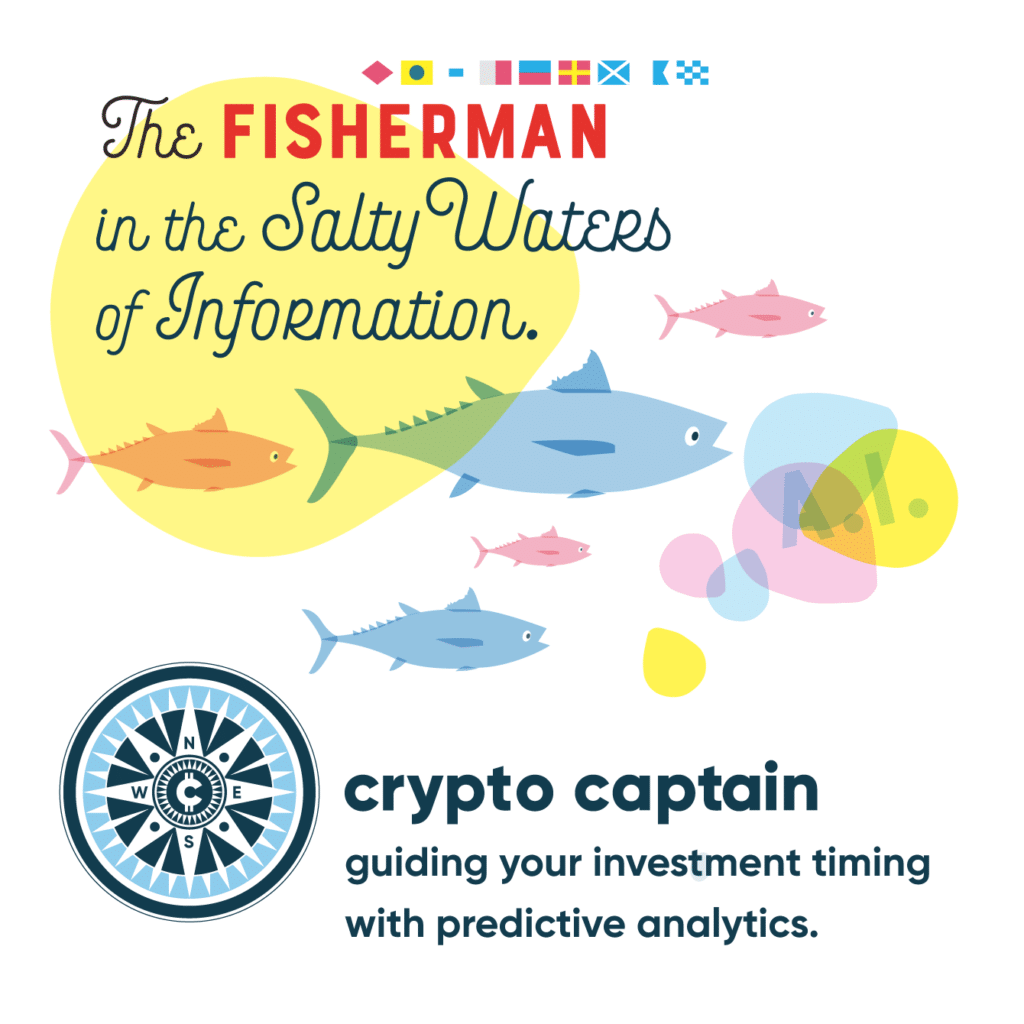
Fishing for Quality sources
Finding websites, which write about cryptocurrencies is just a Google search away nowadays. However, finding quality websites takes time, knowledge, and a rigorous approach.
For us, quality is everything. For this reason, we’ve spent months researching and evaluating sources that could be used by our AI to form market predictions.
The easiest way to find quality sources is to start with a pre-compiled list of websites. Examples include:
- The Top 50 Cryptocurrency Blogs in 2020
- The 50 Best Cryptocurrency Blogs
- Top 100 Cryptocurrency Blogs And Websites For Crypto Investors in 2020
etc.
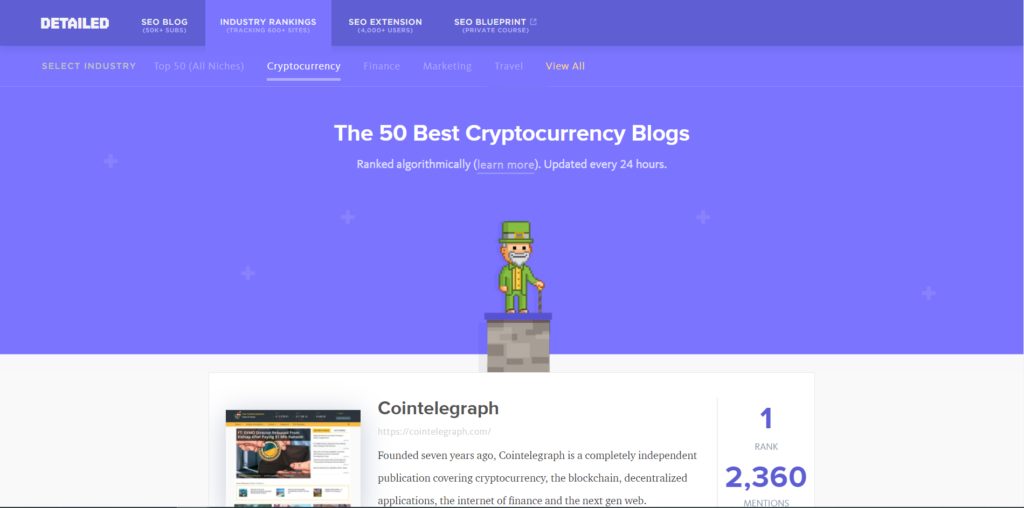
Another place to look for sources is crypto news aggregators. Crypto news aggregators usually don’t offer a readily available list with sources. However, you can easily compile one by yourself by simply going through the articles in the feed. Examples of crypto news aggregators include:

Finally, you can perform a general search on Google or Bing using crypto-related keywords and note down the sources that come up. Relevant keywords would be, for example, “crypto news”, “crypto blog”, “crypto investing”, or simply “crypto”, “cryptocurrency”, or “bitcoin”.
To narrow down your search even further you can use Google News instead of Google or Bing.
Extracting the gems
Now that you have a list of potential candidates you have to weed out the good from the bad ones.
Let’s take CoinDesk as an example. CoinDesk is probably the most popular website in the world that posts exclusively cryptocurrency-related content. The website is often cited by others and is generally praised for its content quality. However, having a high reputation does not automatically mean that all content is relevant for cryptocurrency investors. Let’s dive deeper.
In addition to the main feed we see 10 sub-categories available from the drop down menu:
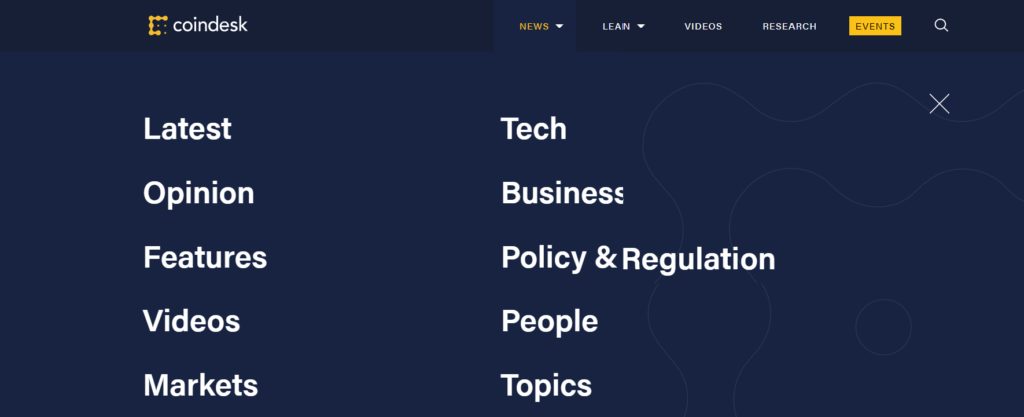
1. Latest – “Latest” is an all-encompassing feed that features news stories and blog posts from all other categories except the “Opinion” and “Videos” categories. All articles seem relevant at first glance and the feed is a good candidate.
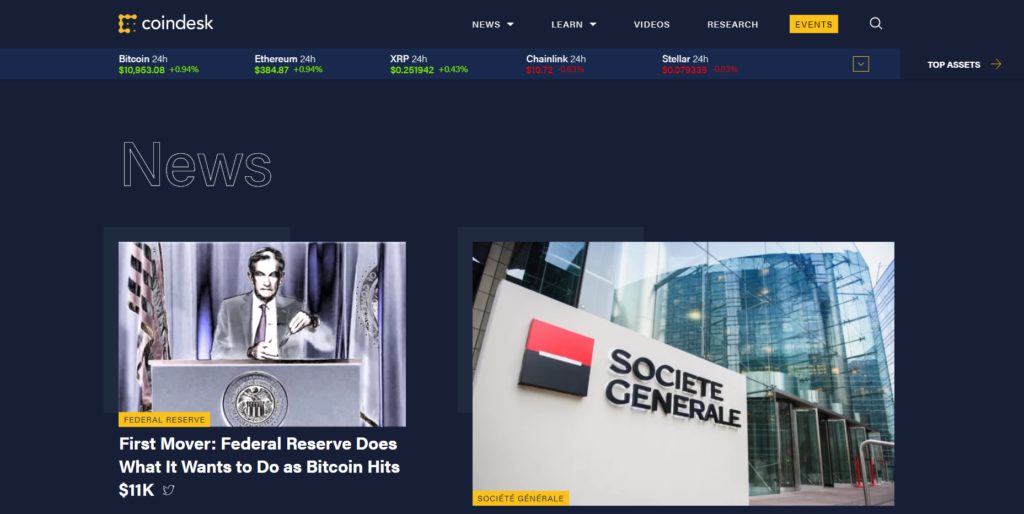

2. Opinion – “Opinion” is an all-encompassing feed that features blog posts and podcasts from other sub-categories such as “Markets”, “Business“, “Policy & Regulation” and “People“. At first glance around 50% of the stories are podcasts such as this one. For someone who is interested in text mining for the purpose of cryptocurrency market predictions, podcasts are, however, not useful at all. In this sense, a feed such as “Opinion” would deliver a lot of irrelevant content and is best to be passed upon.
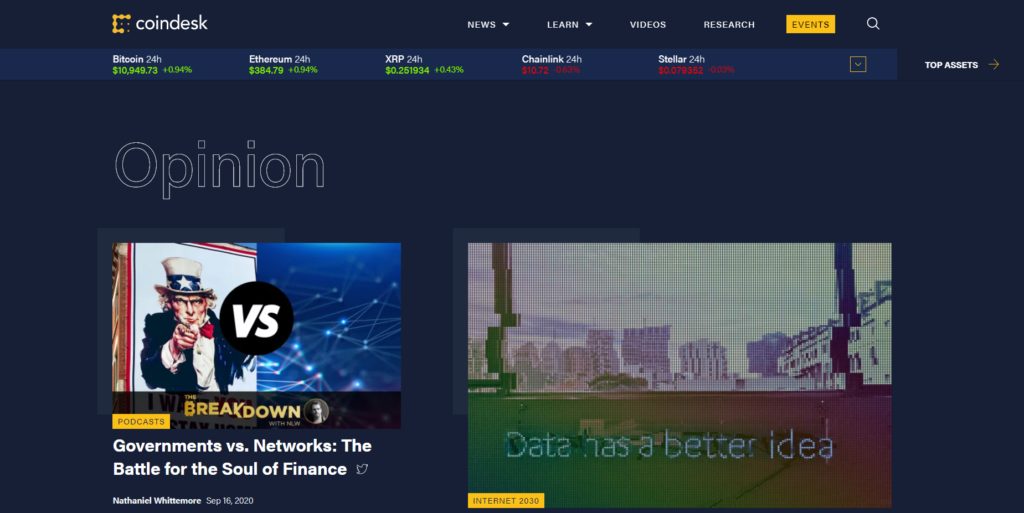
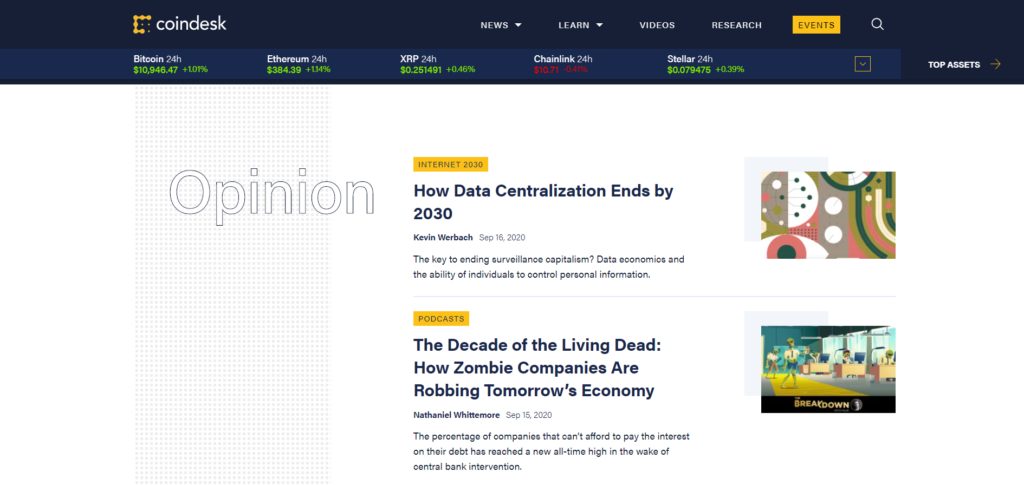
3. Features – “Features” is a special CoinDesk section, which puts in the spotlight, articles that were selected by the CoinDesk editors. Compared to other sub-categories the articles here are few and far between. Generally, this is not an issue. However, if you are already following other feeds in CoinDesk, then the benefit of following “Features” would be marginal.
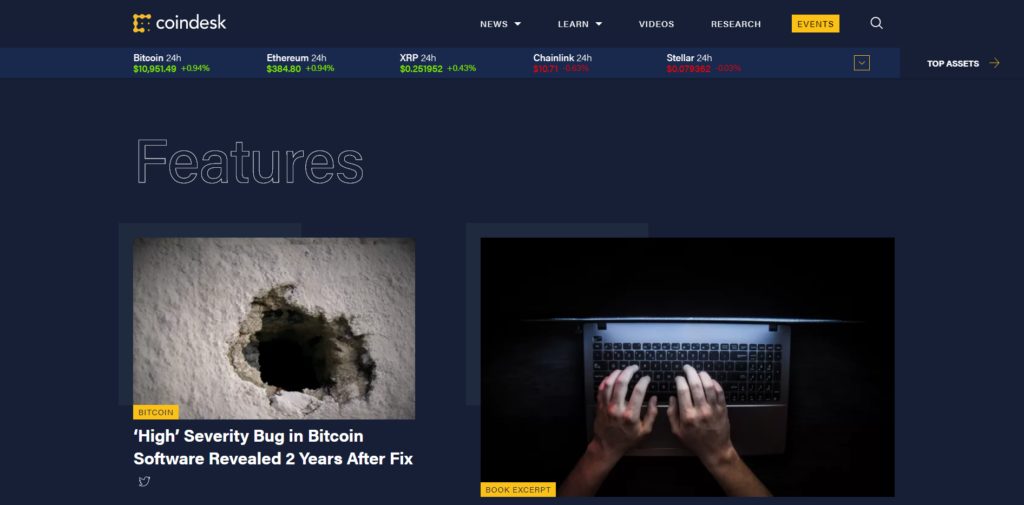
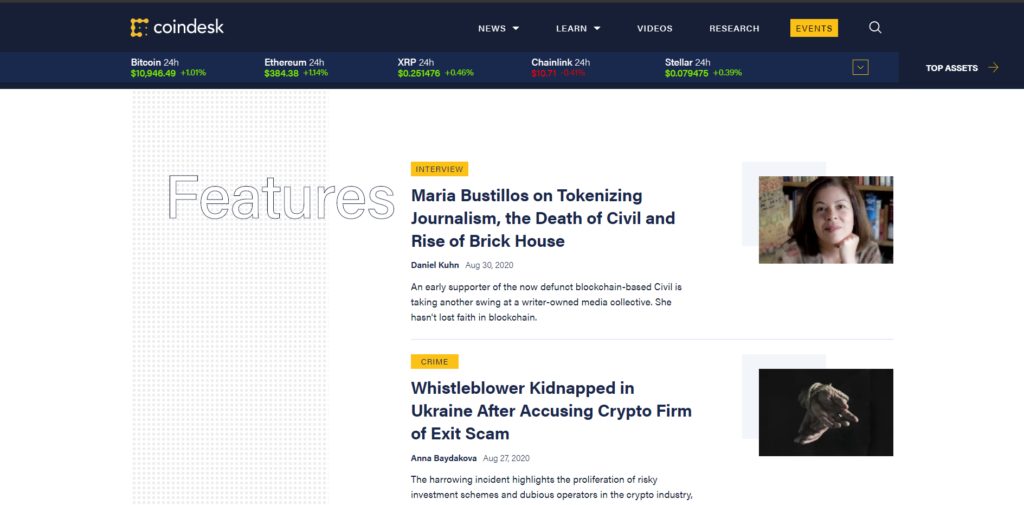
4. Videos – “Videos” features, well, videos from CoinDesk. Similar to podcasts, videos are not useful for text mining for the purpose of cryptocurrency market predictions, and for this reason, the “Videos” feed is a pass.
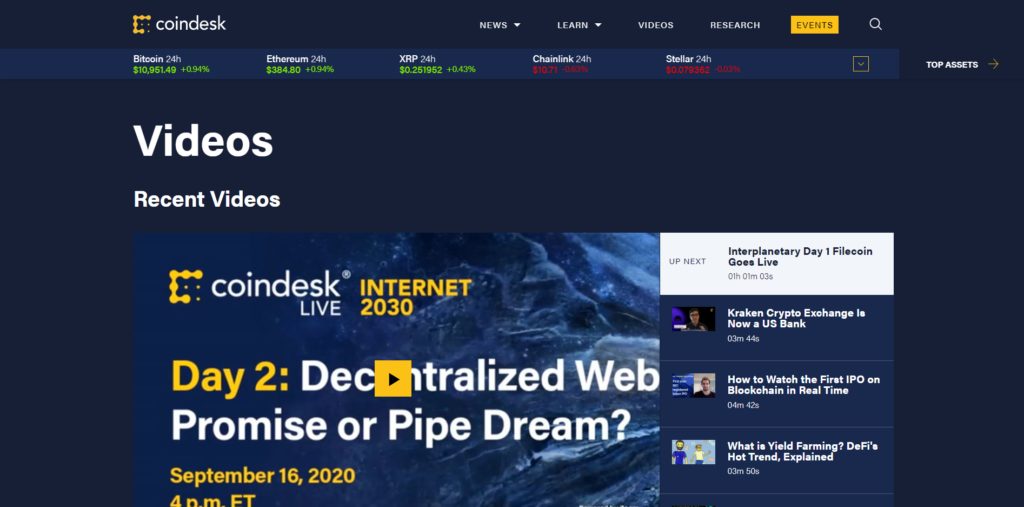
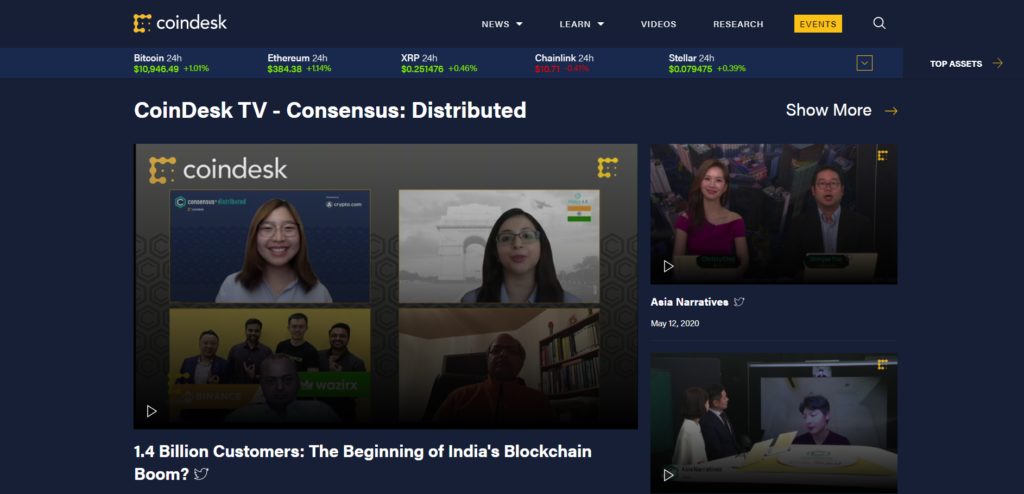
5. News – compared to the “Latest” sub-category “News” features only news stories about blockchain and the cryptocurrency market. In this sense “News” is a reduced version of the “Latest” sub-category. However, everything that can be said in terms of quality and relevance about “Latest” is also applicable to “News”.
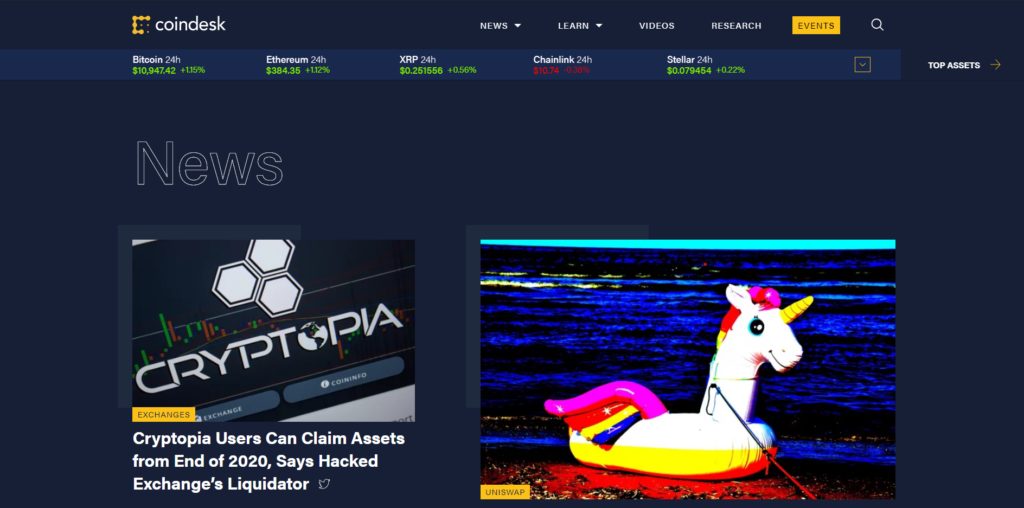

6. Markets – “Markets” features news and blog articles, which provide market updates and cover announcements that are directly related to the cryptocurrency market. At a closer glance, the news and blog stories often include opinions of the author or that of market experts. In this sense, the “Markets” feed captures well the cryptocurrency market sentiment. Finally, the sub-category is particularly useful for sentiment analysis and should be considered.

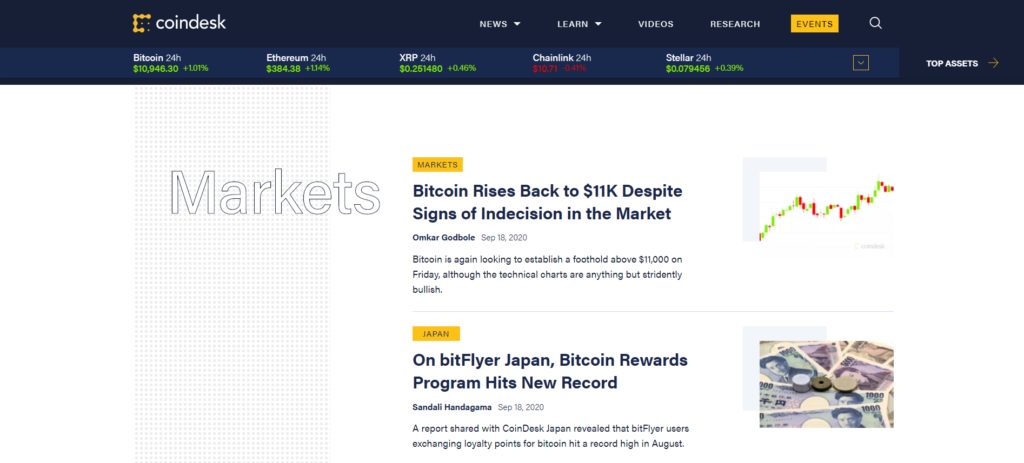
7. Tech – “Tech” features news and blog articles that cover breakthroughs in the blockchain sector. Such breakthroughs can give hope for the future of blockchain but usually concern smaller projects and don’t have an immediate effect on the cryptocurrency market.
Another interesting topic discussed in the “Tech” sub-category is blockchain vulnerabilities. The presence of vulnerabilities can be very relevant for cryptocurrency investors and can cause price declines across the cryptocurrency market. In summary, just for the vulnerabilities alone, it is worth monitoring the “Tech” subcategory.
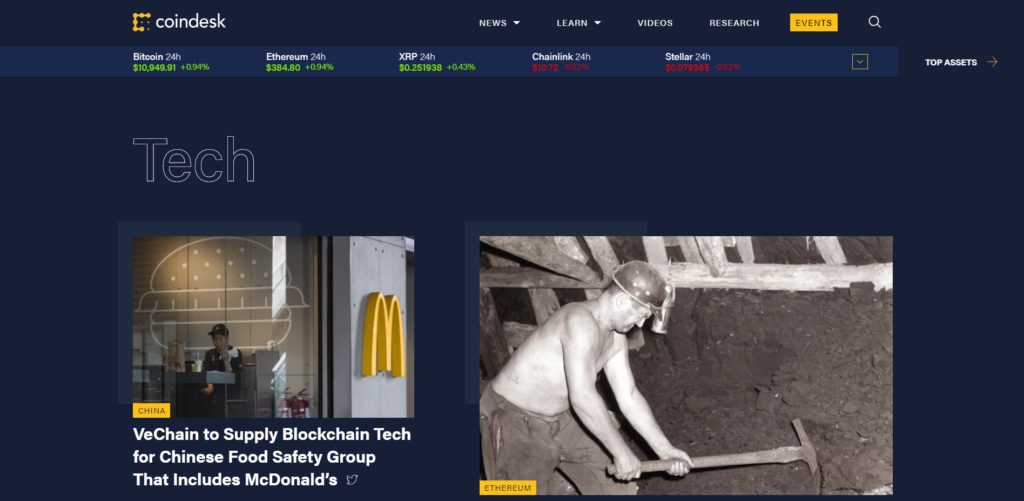
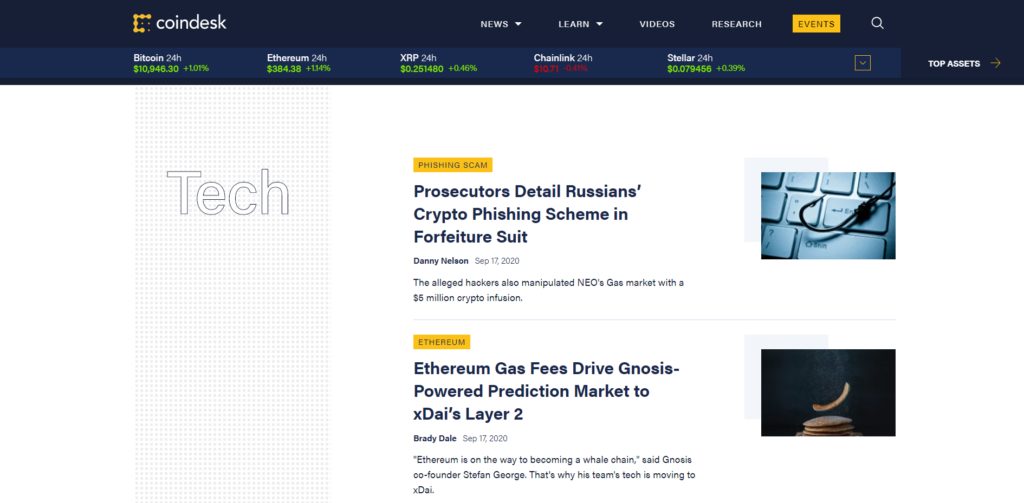
8. Business – “Business” features for the most part news stories about individual companies or projects. Such information can be particularly relevant for people, investing directly in the companies behind the blockchain revolution. However, such information is less relevant for people, investing in the cryptocurrency market. For this reason, the “Business” sub-category can be omitted.
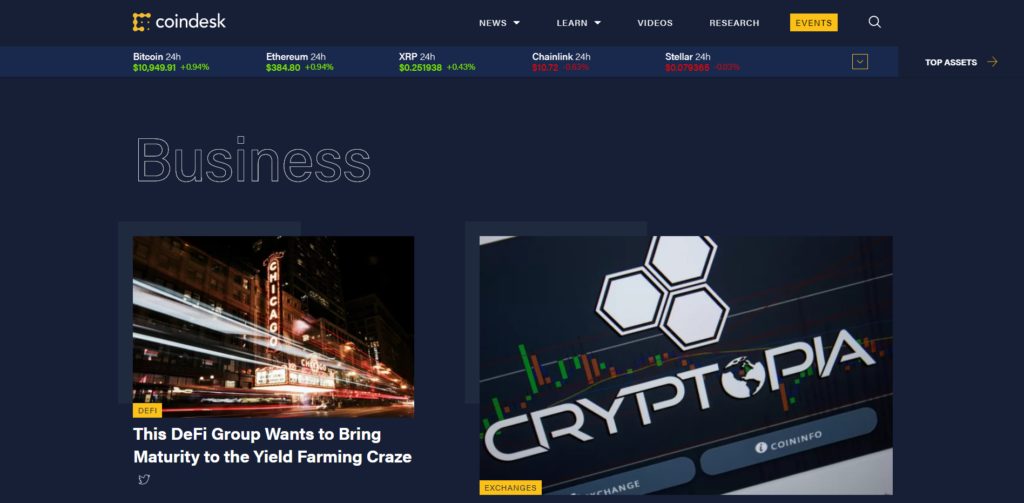
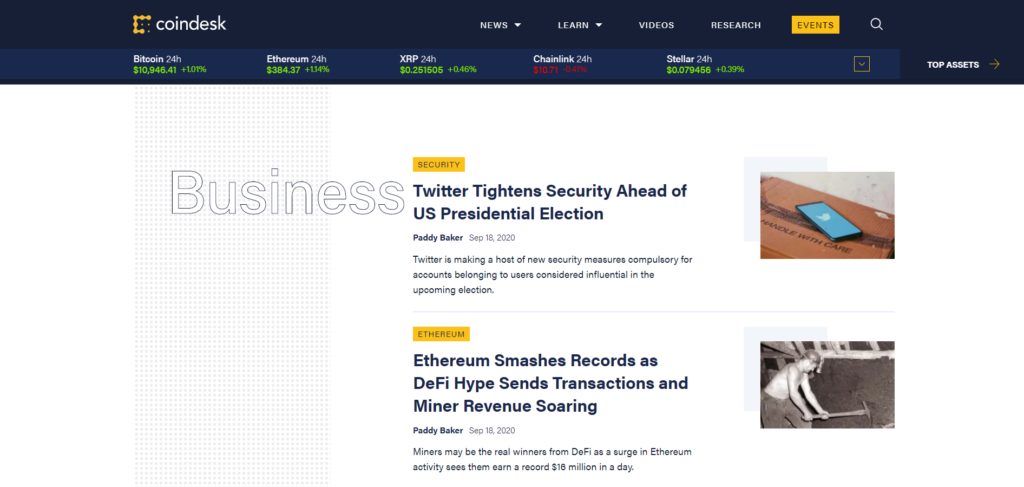
9. Policy & Regulation – policy and regulation news is particularly interesting for cryptocurrency investors as they can have a significant impact on the market in a short period of time after being published. For example, recent news from South Korea about police forces raiding South Korea’s largest cryptocurrency exchange lead to a dip in the price of bitcoin of more than 10%. In this sense, following policy and regulation news can be particularly useful to avoid market crashes. This can be done by taking immediate action as soon as extremely negative news is published.

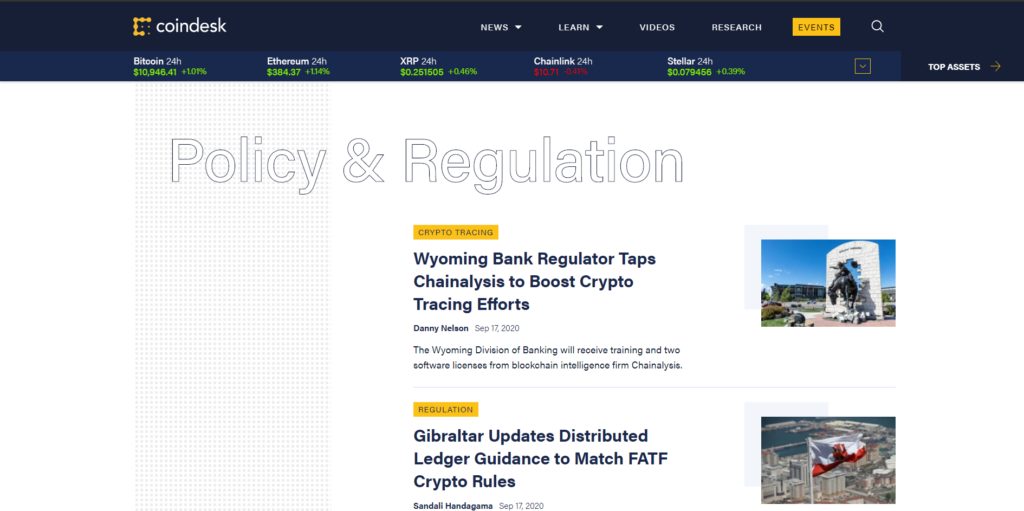
10. People – “People” features for most of its part podcasts and educational or informational essays. The articles that are potentially relevant for text mining and crypto investors are so few that it’s not worth following the feed.
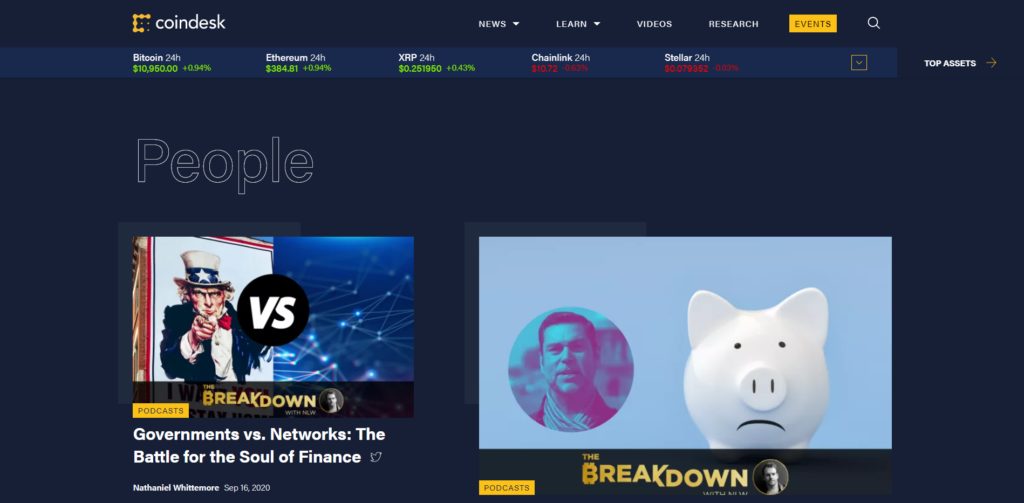

So what is the conclusion after looking into CoinDesk. A person (or a robot) who subscribes to the main feed of CoinDesk would end up with videos, podcasts or stories about companies or new technologies in addition to market-related information.
While videos, podcasts, etc. have with certainty their audience, such information is less relevant for cryptocurrency market predictions relying on text mining. For this reason, a careful preselection of the individual feeds is recommended even with highly regarded sources such as CoinDesk.
A foolproof Guide to source preselection
Now that we’ve seen some examples of what you should pay attention to let’s make it neat and tidy with a step by step guide.
- Go through a website and see what feeds (categories) are available
- Glance over the headlines of 10-15 articles in each feed to determine whether it is worth investing more time in the feed
- If a feed looks promising go through the articles to determine the quality and relevance of the feed
a) You should only consider feeds that you can analyze. This means that you should sort out feeds containing mostly videos, podcasts, or other types of media.
b) If the articles are too similar to one another then they are probably written by a bot. In this case, it is best to omit the specific feed.
c) If all articles are reposted from another source then it is best practice to consider the original source.
d) The articles should not simply describe historical data such as price movements or blockchain events. Instead, the articles should include price analyses, market analyses, or more general opinions about the price and the market.
e) The articles should stay on topic.
f) The articles should be of high quality. This can generally be inferred from the style of writing and the vocabulary used. - Compare all relevant feeds and check if there are feeds which contain only articles from other feeds
By following these tips and with some little effort on your side you will have a solid database in no time.
About CryptoCaptain
CryptoCaptain helps investors answer the question “When should I invest in the cryptocurrency market?“.
To help answer this question, we’ve developed the Bull Market Compass.
The Bull Market Compass is an investment signal service, which guides long-term investors through the volatile cryptocurrency market. In its core it is a powerful custom-built A.I. with remarkable predictive analytics capabilities.
On the one hand, it protects investors’ capital by early detecting bear markets and warning investors ahead of time.
On the other hand, it saves investors’ time by sending out quality investment signals and by monitoring the market for them.

